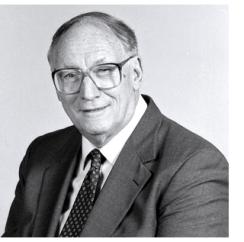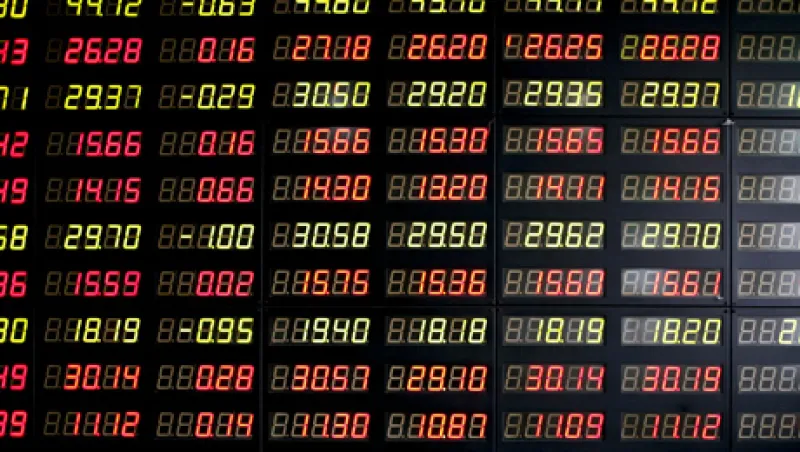A panel of experts gathered in New York recently to debate whether the great rotation back to equities from fixed income has finally arrived. After all, in the first quarter of 2013, the stock market reached new highs as a record $19 billion flowed back into equities. While panelist and equity analyst Rich Repetto, a principal at Sandler O’Neill, agreed we could be seeing the beginnings of a rotation into equities, he qualified his observation: This time passive equities might comprise the lion’s share of equity assets. That’s because growth in exchange-traded funds, or ETFs, is far surpassing growth in active management, Repetto observed.
The timing for an equity resurgence into ETFs could not be better. This year marks the 20th anniversary of the Standard & Poor’s Depository Receipts or SPDRs, the first ETF, approved by the Securities and Exchange Commission in 1993. The proliferation of these vehicles, which now number around 1,450 funds, would not surprise Nathan Most, whose idea for the unique ETF structure arose from his long experience in commodities trading. Before his death in 2004, Most predicted the new product would grow far beyond its early start as an equity index vehicle.
As fund providers continue to develop new types of ETFs and seek a way to crack the 401k market, it is time to honor Most, who, like many early rock stars, never received a penny in royalties from his successful creation. In 2004, just a few months before his death at age 90, Senior Writer Frances Denmark spoke with Most about how he came up with the idea for these funds and his vision for their future development.

Most’s creativity was triggered by a confluence of events: decreasing profits at the Amex and a changing financial landscape. As head of new product development in the option and derivative section, Most spent his days developing new types of indexes for different parts of the market and applying them to options. But the equity side of the exchange was in trouble with only two million shares traded each day. “I thought there had to be a better way than entertaining company executives only to see them list on Nasdaq anyway,” Most confided.
Most began to look for a new group of securities that were not already trading to list on the Amex. He looked to mutual funds as the answer because they hadn’t changed in 50 or 60 years. He selected the S&P 500 index mutual fund as the first ETF product and paid a visit to Jack Bogle, then head of Vanguard Group, to discuss the idea. “Jack was very polite, but he said listing mutual funds on an exchange would add trading costs and wouldn’t work because he was dedicated to low cost operations,” recalled Most, who was undaunted by the rebuff. Even after Vanguard added ETFs to its fund line-up, Bogle continued to disparage them, believing they encouraged day trading.
Most conceived of the new fund as a kind of commodity product. His thinking: Many commodities are stored in warehouses or grain elevators. The warehouses issue a bulk receipt to the owner of the commodity. The owner will also sell against the commodity stored and obtain a subwarehouse receipt in the amount sold, which the buyer can hold. This form of transaction led Most to think in terms of depositing standard blocks of securities in a depository and then obtaining a receipt that could be divided into many pieces tradable on the exchange.
As with many novel ideas, Most’s was greeted with skepticism. Amex attorneys told him it would never get through the SEC approval process, which required an exemption to the Investment Company Act of 1940. But times were changing.
After the 1987 stock market crash, the SEC began to realize that they needed better hedging mechanisms — better ways of dealing with investments in stocks — than they had. The failure at that time of “portfolio insurance” — futures contracts used to hedge against down markets — also aided Most’s cause. He had proposed the idea of the ETF prior to the crash, including the idea of being able to use it as a hedging instrument if the SEC would permit the ETF to short on a downtick. The crash, which caused a lot of new thinking at the SEC, paved the way for the SPDR.
The new product had a number of benefits over mutual funds that stemmed from the idea of creating and purchasing the units by depositing stock with the fund instead of cash. To withdraw from the product, an investor submitted the units in a required basket size and would get back the stock. In this way, no money — or brokerage fees — changed hands; it was designed to have only stock going back and forth.
To keep the retail investor out of the fund, ETFs could only be created in large blocks, which would also cut costs. The original SPDR was $100 a share for 50,000 shares. Only “authorized participants,” that is, designated, large investment companies, would be able to trade in and out of the funds. Retail investors would only be able to trade ETFs on the stock exchange.
The idea of buying positions in the ETF with stock deposited with the fund instead of money is what makes it possible to arbitrage. Most and his legal team — headed by “SPDR Woman,” Kathleen Moriarty, a partner at the New York–based law firm Katten Muchin Rosenman, had to persuade the National Securities Clearing Corporation (NSCC, now a subsidiary of the Depository Trust and Clearing Corporation) to build a new system that would permit issuance of the ETFs using deposit of stocks instead of money. The standard clearing system at the time would only transfer stock in one direction and money in the other.
The potential for arbitrage keeping the ETF tracking the net asset value of the fund was important since without this the ETF might have acted like a closed-end fund. Arbitrage enables tracking of the ETF to the underlying index. The ability to purchase the portfolio of stocks needed to create the ETFs at any time during the trading day and have it match the NAV of the fund at the end of the day is essential. Taxable investors were freed from the capital gains that mutual funds distribute at year end, due to the redemption process of delivering out stock instead of money.
It took three years for Most to convince Amex to invest in the ETF creation and another three for the first ETF to make it through the arduous SEC approval process. Most was then 79 years old. The first buyers were institutions that used the SPDR for temporary positioning. Because investors could short the product on the downtick, it was used for hedging and began to compete with futures.
In 2004, Most envisioned the coming of actively managed ETFs as well as commodity and gold ETFs. “The ETF structure can be used for almost anything,” he said. “As long as the underlying product has liquidity of trading, you could trade almost anything in this structure.” He added, “There’s just a tremendous market out there, and we’re stuck if we’re limited to just using equity indexes. Someday someone will decide that the opportunity is too great to ignore.” Cerulli Associates in Boston agrees. They project that ETF assets will grow to more than $2 trillion in the next two years and reach $4 trillion in 2017.






